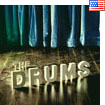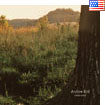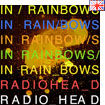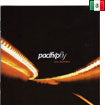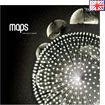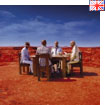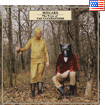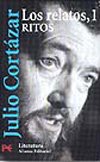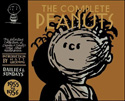En Houghton las diferentes divisiones de la compañía solían competir entre ellas para ver cuál podía recaudar más dinero para una causa específica (he olvidado cuál era) colocando libros usados sobre mesas en los pasillos e invitando a la gente a tomarlos a cambio de un dólar. Uno de los libros que me llevé yo en algún momento es "Destejiendo el arco iris" por Richard Dawkins, un "popularizador de la ciencia" en la línea de Carl Sagan cuyo libro más famoso es probablemente "El gen egoísta", el libro que acuñó el término "meme" y sugería (entre otras cosas) que nuestros cuerpos son sólo vehículos para genes que buscan reproducirse.
| | At Houghton the different divisions of the company would used to compete with each other to see who could raise more money for a specific cause (I've forgotten which one) by placing used books on tables in the hallways and inviting people to pick them up and leave a dollar bill. One of the books I picked up at one point is "Unweaving the Rainbow" by Richard Dawkins, a "science popularizer" in the lines of Carl Sagan whose most famous book is probably "The Selfish Gene", the book that coined the term "meme" and suggested (among other things) that our bodies are just vessels for genes that want to reproduce.
|
Bueno, apenas voy en el capítulo 4 y aunque se vende como un libro que empareja las delicias de la ciencia con las del arte, estoy encontrando que su enfoque primario es cómo el estudio--y específicamente, el "destejimiento"--de frecuencias y formas de onda nos revelan mucho del mundo material. El aplicar un análisis de Fourier a las frecuencias de luz que nos llegan de una estrella lejana, por ejemplo, nos dice mucho acerca de su edad, tamaño, distancia y composición física. Otro análisis de Fourier aplicado a una estela de pis dejada al lado de un camino en la India nos revela el tamaño del pene de un elefante y su distancia del suelo. (El ejemplo es suyo, no mío.)
| | Anyway, I'm only through the first 4 chapters and although it pitches itself as a book that pairs the delights of science with those of the arts, I'm finding its primary focus is on how studying--and specifically, "unweaving"--frequencies and waveforms gives us much insight into the material world. Applying a Fourier analysis on the frequencies of the light we see from a remote star, for example, can tell us a lot about its age, size, distance and physical composition. Applying a Fourier analysis on a trail of piss left behind on the side of a road in India can reveal the size of an elephant's penis and its distance from the ground. (It's his example, not mine.)
|
Hay muchos poemas citados en el libro, principalmente de Keats (a quien encuentro difícil de leer), y de hecho el nombre del libro viene de un poema suyo que condena a Newton por "explicar" el arco iris y por ende arruinar el sentido de asombro y belleza que provoca contemplar uno--y es aquí donde entra el Sr. Dawkins para decir, "Espera, saber cómo funcionan estas cosas es aún más maravilloso y asombroso que no saberlo." Bueno, el capítulo 4, que trata con (las frecuencias en) el sonido, tiene una parte de un poema de Keats que se llama "Oda a un ruiseñor", en el que aparentemente entra en un trance narcótico escuchando el canto del ave. Dawkins continúa afirmando que la sensación de estar colocado que describe Keats puede no ser una idea muy descabellada, porque en la naturaleza el sonido tiene este efecto todo el tiempo. Y aquí cito directamente de su libro (la traducción es mía):
|
| A lot of poems are quoted in the book, mostly from Keats (who I find difficult to read), and the name of the book actually comes from a poem of his that condemns Newton for "explaining" the rainbow and hence ruining the sense of beauty and wonder that comes from contemplating one--and this is where Mr. Dawkins steps in to say, "Wait, knowing how these things work is even more wondrous and awe-inspiring than not." Anyway, chapter 4, that deals with (frequencies in) sound, has a piece of a poem by Keats called "Ode to a Nightingale", where he apparently gets high by listening to the bird's song. Dawkins goes on to say that Keats' description of a narcotic experience provoked by a sound may not be such a wild idea, because in nature sounds have this effect all the time. And here I quote directly from his book:
|
"Ruiseñores machos necesitan influir sobre el comportamiento de ruiseñores hembras [...] Algunos ornitólogos han descrito la canción como un transporte de información: 'Soy un macho de la especie Luscinia megarhynchos, en condiciones de inseminar, con un territorio, hormonalmente óptimo para aparear y construír un nido.' Sí, la canción contiene esa información, en el sentido de que una hembra que al escucharlo asume que es verdad y actúa podría beneficiarse. Pero hay otra manera de interpretarlo que siempre me ha parecido más vívida. La canción no es para informar a la hembra sino para manipularla. No es que la canción cambie lo que la hembra sabe, sino que está directamente cambiando el estado psicológico interno de su cerebro. Está actuando como una droga."
| | "Male nightingales need to influence the behaviour of female nightingales [...] Some orthinologists have thought of song as conveying information: 'I am a male of the species Luscinia megarhynchos, in breeding condition, with a territory, hormonally primed to mate and build a nest.' Yes, the song does contain that information, in the sense that a female who acts on the assumption that it is true could benefit thereby. But another way of looking at it has always seemed to me more vivid. The song is not informing the female but manipulating her. It is not so much changing what the female knows as directly changing the internal physiological state of her brain. It is acting like a drug."
|
Continúa explicando que hay evidencia experimental de que los niveles hormonales de palomas y canarios hembras fluctúan cuando son expuestas a determinadas vocalizaciones de machos. Es extraño, porque parece tan obvio que el sonido y la música influyen en nuestro estado emocional y de conciencia, pero nunca lo había visto como una droga. Y eso es todo, me parecía algo que valía la pena compartir. (¡La otra cosa buena de este capítulo es que me ha dejado mucho más claro cómo las formas de onda representan en realidad al sonido!)
| | He goes on to explain there is experimental evidence that the hormone levels of female doves and canaries fluctuate when exposed to specific vocalizations of males. It's strange, because it seems so obvious that sounds and music have an influence on our state of mind and awareness, but I'd never thought of it as a drug. And that's it, I just thought this was worth sharing. (The other good thing about this chapter is that now I have a much better understanding of how waveforms actually represent sound!)
|

























